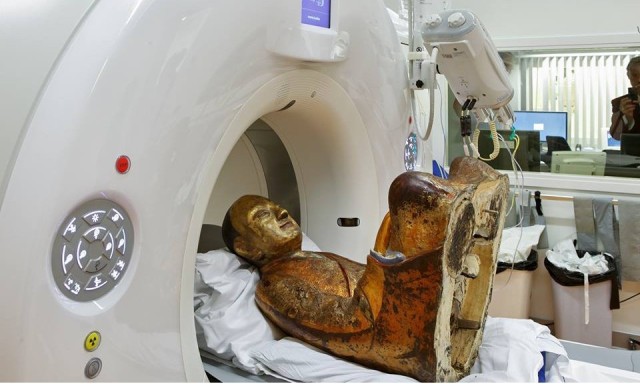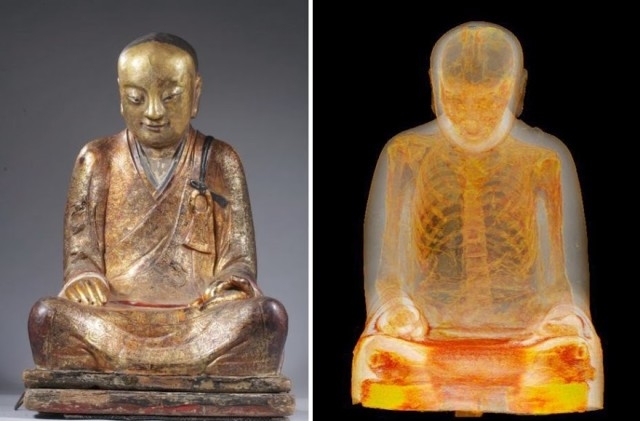When you think of what your final resting place will be like, statue-mummification doesn’t usually come to mind. That was the case, however, for one Buddhist master immortalized within a religious idol.
Researchers at the Meander Medical Center in Amersfoort, Netherlands discovered the mummified remains of a monk inside a Chinese statue of Buddha. The remains, which are presumed to be of Buddhist master Liuquan of the Chinese Meditation School, are the first of its kind to be found. The remains are believed to date back to 1100 A.D.
The entire body was found inside, folded in the same resting position as the exterior of the Buddha statue.
Buddhist art expert Erik Brujin supervised a full CT scan and endoscopy of the Buddha. Samples were also taken of the mummies thoracic and abdominal cavities, revealing scraps of paper scribed with ancient Chinese characters.
Researchers believe this “living Buddha” may be an example of self-mummification, which entails a life of extreme solemnity and austerity. After a strict diet comprised of water, seeds, nuts, roots, tree bark, and special tea for 2,000 days, the monks would be sealed in a stone tomb.
Following another 1,000 days after the monk’s death, the tomb would be opened and the state of the body checked. Monks who had mummified would be placed in temples and venerated. Those who had not achieved mummification would be respected, but remain entombed. In the past, some believed this type of mummification was less a form of death, and more so a highly spiritual state and advanced form of enlightenment.

PHOTO: Jan van Esch / Meander Medical Center
The statue containing Liuquan was originally exhibited at the Netherland’s Drents Museum, but will move on to display at the Hungarian Natural History Museum until May 2015.
This story was compiled with information provided by CNET.
 CGTN America
CGTN America PHOTO: M. Elsevier Stokmans
PHOTO: M. Elsevier Stokmans
